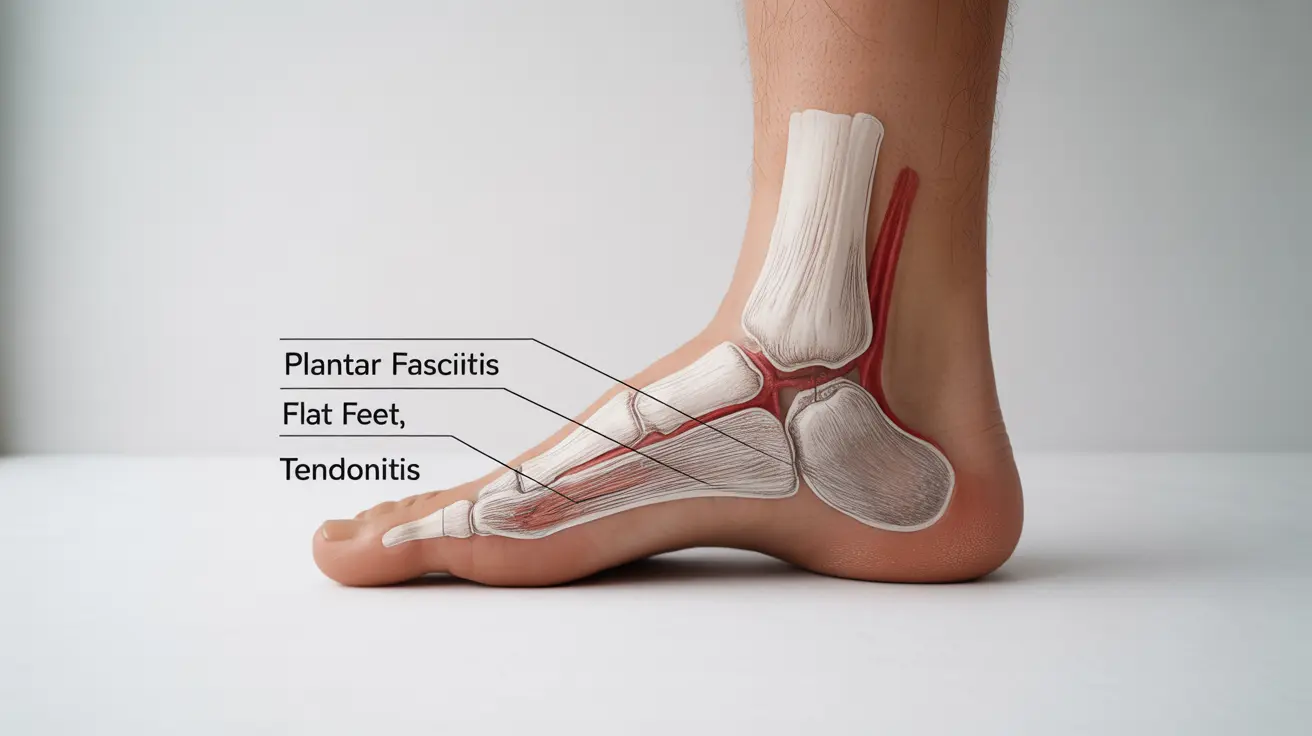Experiencing foot arch pain can significantly impact your daily activities and quality of life. This comprehensive guide explores the various causes of arch pain, effective treatment options, and practical prevention strategies to help you understand and manage this common condition.
Understanding Foot Arch Pain and Its Causes
Foot arch pain can stem from various conditions and factors, ranging from structural issues to overuse injuries. Understanding the root cause is crucial for effective treatment and prevention.
Common Causes of Arch Pain
Several conditions can trigger pain in the arch of your foot:
- Plantar fasciitis
- Flat feet or fallen arches
- Posterior tibial tendonitis
- Stress fractures
- Overuse injuries
- Poor footwear choices
Signs and Symptoms
The characteristics of foot arch pain can vary depending on the underlying cause:
- Sharp pain in the arch, especially in the morning
- Increased pain after prolonged standing or activity
- Swelling or tenderness along the foot arch
- Pain that worsens throughout the day
- Difficulty walking or maintaining balance
Treatment Options for Foot Arch Pain
Home Remedies
Many cases of foot arch pain can be effectively managed at home with these approaches:
- Rest and activity modification
- Ice therapy for 15-20 minutes, 3-4 times daily
- Over-the-counter pain relievers
- Supportive footwear with proper arch support
- Compression socks or arch support bands
Professional Treatment Options
When home remedies aren't providing relief, medical professionals may recommend:
- Physical therapy
- Custom orthotics
- Cortisone injections
- Night splints
- In severe cases, surgery
Prevention and Management Strategies
Proper Footwear Selection
Choosing appropriate footwear is crucial for preventing arch pain:
- Select shoes with adequate arch support
- Replace worn-out shoes regularly
- Use sport-specific footwear for athletic activities
- Consider custom orthotics if recommended by a healthcare provider
Strengthening and Stretching Exercises
Regular exercises can help prevent and manage arch pain:
- Toe stretches and curls
- Calf stretches
- Plantar fascia stretches
- Ankle strengthening exercises
- Balance exercises
Frequently Asked Questions
What are the common causes of pain in the arch of my foot, and how can I tell if I have plantar fasciitis?
Common causes include plantar fasciitis, flat feet, and overuse injuries. Plantar fasciitis typically presents as sharp heel and arch pain, particularly intense in the morning or after periods of rest. The pain usually improves with movement but may worsen throughout the day.
How can I treat foot arch pain at home, and when should I seek medical help?
Initial home treatment includes rest, ice therapy, compression, and over-the-counter pain relievers. Seek medical attention if pain persists beyond two weeks, becomes severe, or is accompanied by significant swelling or inability to bear weight.
Can flat feet or overpronation cause persistent arch pain, and what are the best ways to manage these conditions?
Yes, flat feet and overpronation can lead to chronic arch pain. Management typically involves using proper supportive footwear, custom orthotics, and specific exercises to strengthen the feet and ankles. Physical therapy may also be beneficial.
What are some effective stretches and exercises to relieve arch pain and prevent future occurrences?
Effective exercises include toe stretches, calf raises, plantar fascia rolls with a tennis ball, and towel scrunches. Perform these exercises daily, especially before getting out of bed and after long periods of inactivity.
How can I prevent arch pain from happening in the first place, especially if I have to stand for long periods at work?
Prevention strategies include wearing supportive shoes with good arch support, using anti-fatigue mats when standing for long periods, taking regular breaks to stretch, maintaining a healthy weight, and gradually increasing activity levels to avoid overuse injuries.




